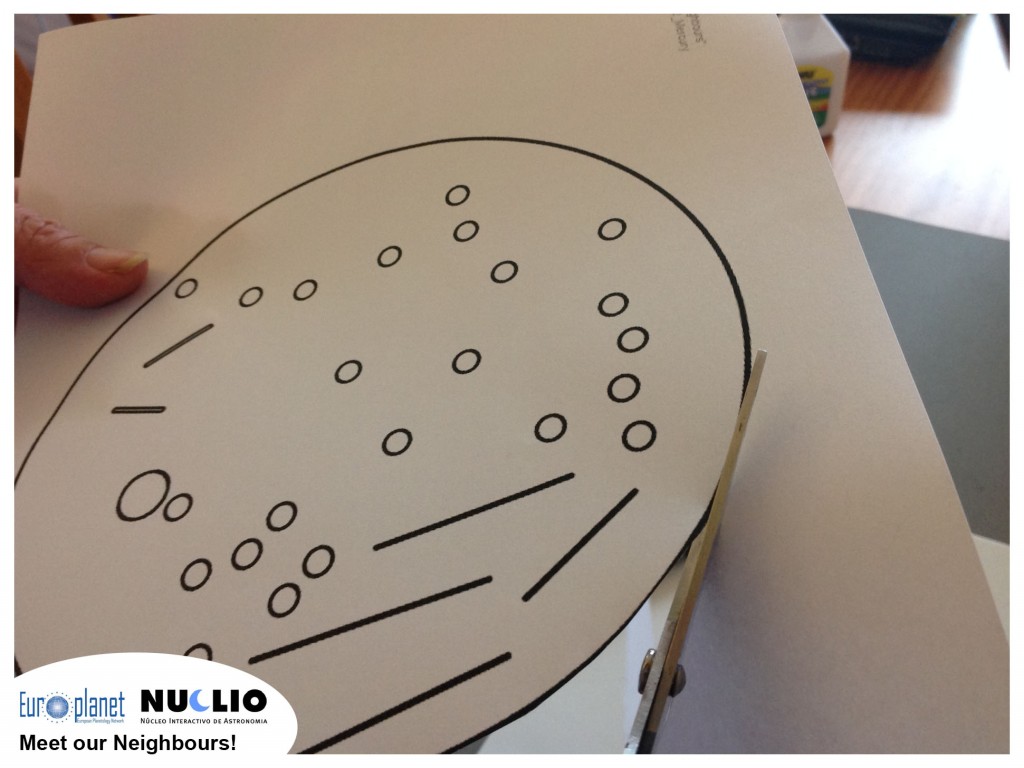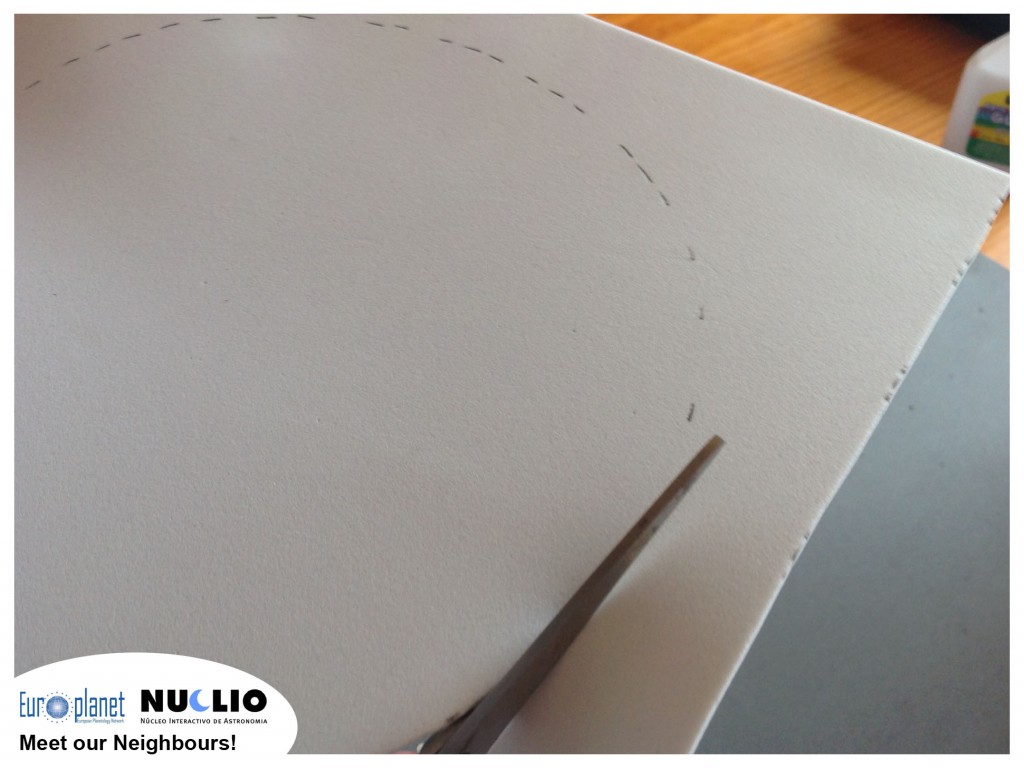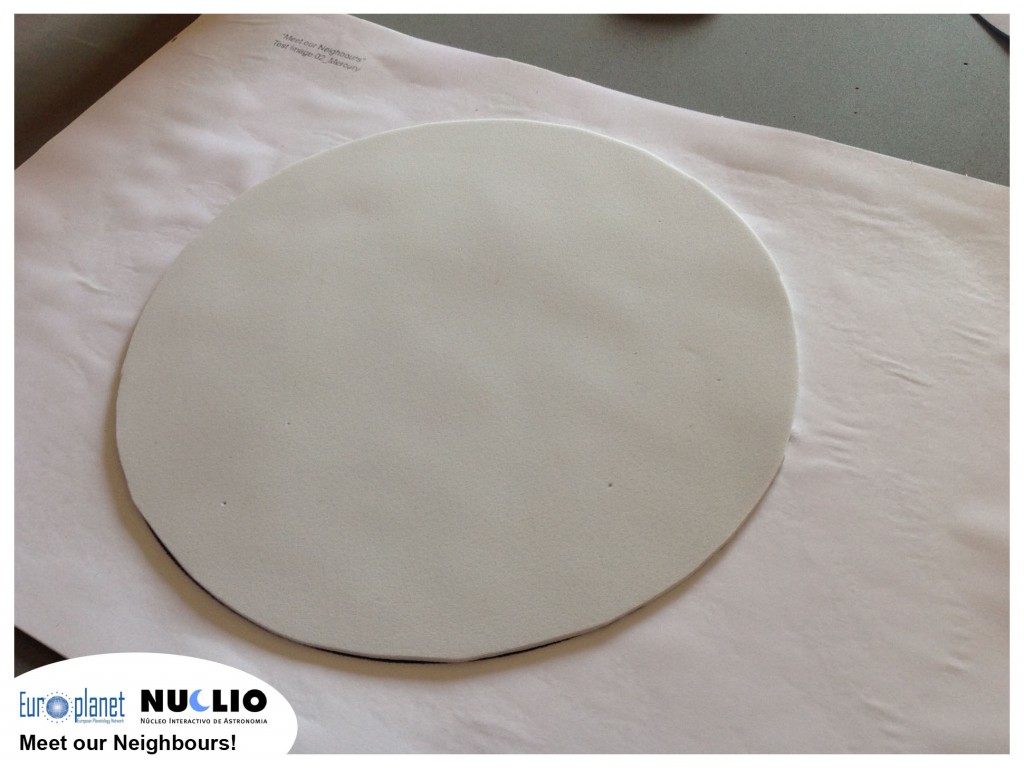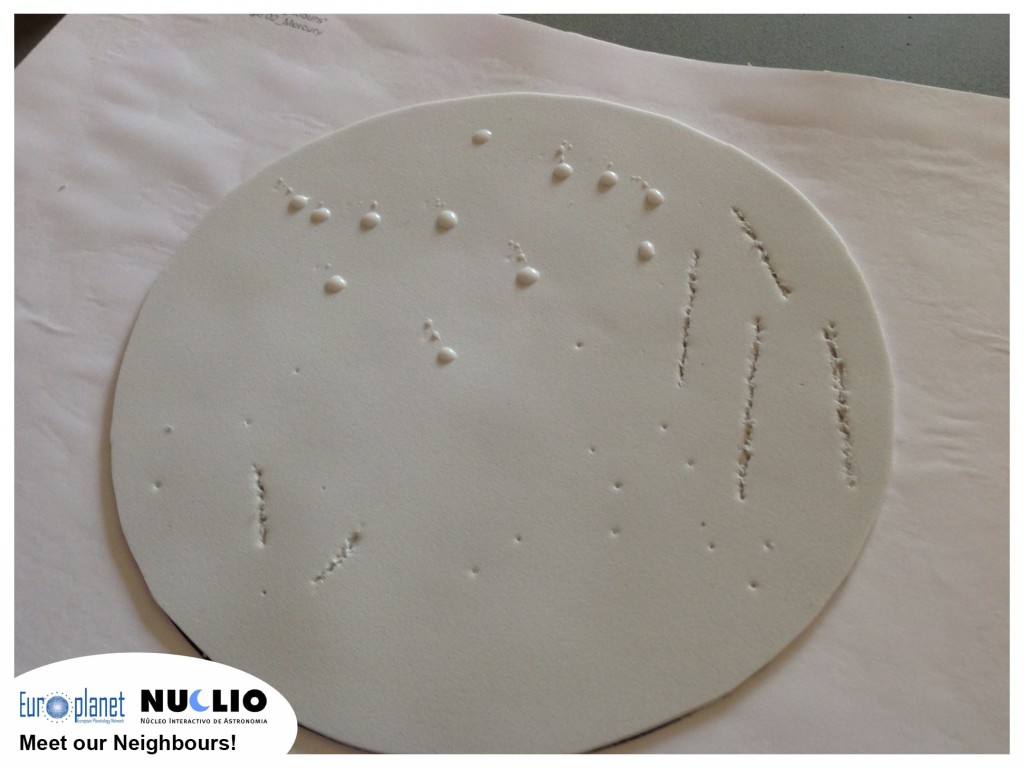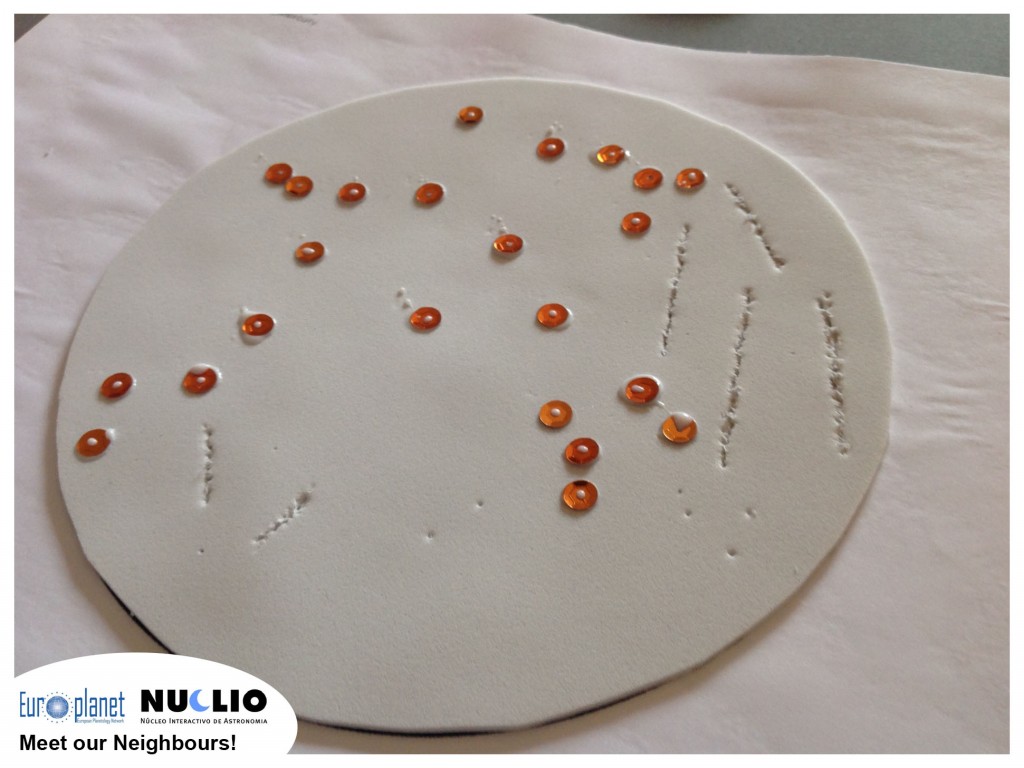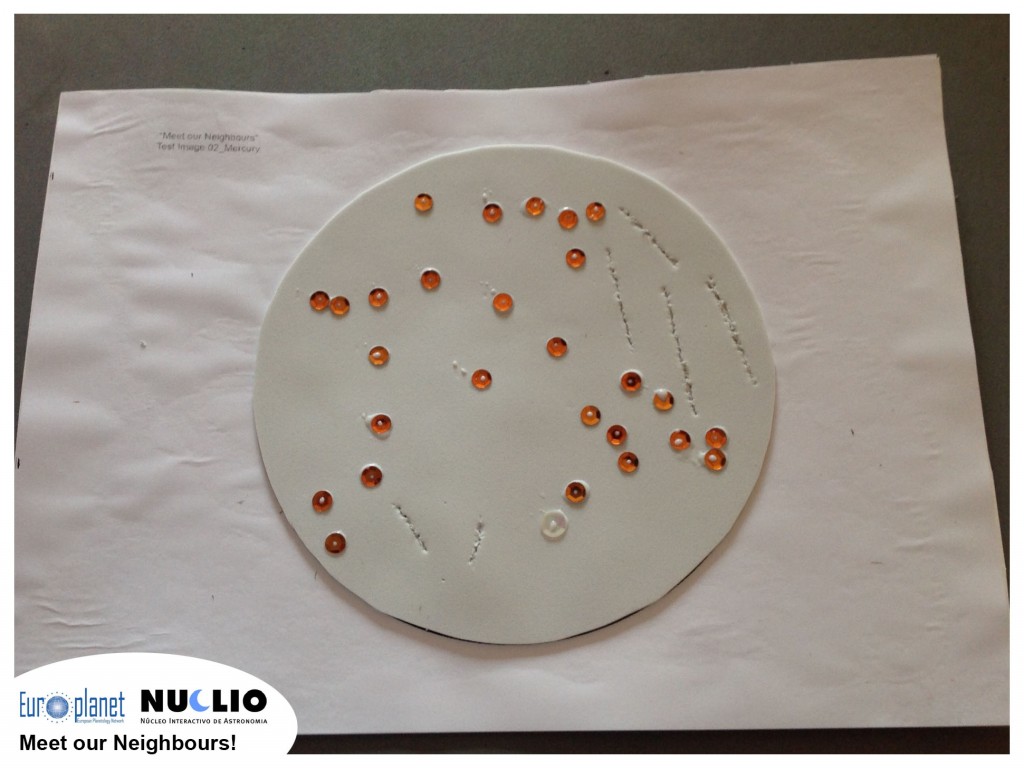:: Description ::
In this activity groups of visually impaired students and their sighted peers are invited to use daily basis items and recycled materials to build a tactile schematic image of a celestial object from our solar system. In a group activity, they are also encouraged to research about our celestial neighbour and its main characteristics.
This activity is planned for groups of children from 6 to 12 years old, and their educators gathered in groups of 3 to 5 children (for example 3 sighted children and two visually impaired). The activity can be implemented at three stages that can be done separately:
- Research on the celestial object by the children prior to the activity;
- Build the tactile image in a hands-on performed by the sighted children closely interacting with their visually impaired peers;
- Tactile exploration of the final schematic image by visually impaired children.
Variations of the activity can also be conducted. For instance, promote activities for sighted children in which they learn and build the tactile images and then promote explanatory sessions to their visually impaired peers.
In all stances, it is strongly advised to stimulate interactions between sighted children and their visually impaired peers.
:: Materials ::
Tactile features present in planet Mercury and correspondent suggested textures:
Surface: thick fabric;
Craters: sequins;
Black and white prints of image (x2) and mold (x1). Click links to Download.
These materials are only suggestions; all textures can be replaced by local low-cost materials from each community that plans to implement “Meet our Neighbours!”.
:: The Scientist Explains ::
[General Information]
Mercury is the closest planet to the sun, at a mean distance of 58 million km. If one could stand on the surface of Mercury when it is at its closest point to the Sun, the Sun would appear almost three times as large as it does from Earth. Scientists used to think that the same side of Mercury always faces the sun, but in 1965, astronomers discovered that the planet rotates three times during every two orbits. Mercury speeds around the sun every 88 days traveling through space at nearly 50 km per second — faster than any other planet. One Mercury day equals 176 Earth days.
Because Mercury is so close to the Sun, it is hard to observe directly from Earth except during twilight. Mercury makes an appearance indirectly, however — 13 times each century, Earth observers can watch Mercury pass across the face of the Sun, an event called a transit.
With a diameter of about 4,900 km, Mercury is the smallest planet in the solar system, only slightly larger than the Moon. It is also the second densest planet after Earth, with a large iron core having a radius of 1,850 km, about 75% of the planet’s radius. Its outer shell, comparable to Earth’s outer shell (called the mantle), is only 500 km thick.
Temperatures on Mercury’s surface can reach 430°C. Because the planet has no atmosphere to retain that heat, night time temperatures on the surface can drop to –70°C. Rather than an atmosphere, Mercury possesses a thin “exosphere” made up of atoms blasted off its surface by the solar wind and micrometeorites.
[Tactile features]
[While you explore the tactile schematic image you can find:]
Craters
Mercury’s surface resembles that of Earth’s Moon, scarred by many impact craters (materialized by sequins on the tactile image) resulting from collisions with meteorites and comets.
Caloris Basin
The Caloris Basin (materialized by the largest sequin on the tactile image), one of the largest features on Mercury, is about 1,300 km in diameter. It was the result of an asteroid impact on the planet’s surface early in the solar system’s history. Over the next half-billion years, the outer crust contracted and grew strong enough to prevent magma from reaching the surface, ending the period of geologic activity.
Scarps or cliffs
While there are areas of smooth terrain, there are also lobe-shaped scarps or cliffs (materialized by deep strips on the thick fabric on the tactile image), some hundreds of kilometres long and soaring up to a kilometre high, formed by early contraction of the crust.
:: Full Activity Description ::
Prior to the activity:
- Gather the children in groups of 5 elements – visually impaired and non-visually impaired (ideally three non-visually impaired to 2 visually impaired);
- Present one image per group;
- Distribute materials accordingly;
During the activity:
- Close supervision – follow each group and explain each of the tactile elements and their correspondence to the each object feature;
- Understand the different needs of each group of students to promote interaction between the children during the building of the tactile image – visually impaired children need to be familiarized with the different materials involved;
Building the tactile image:
This is a step by step guide to the activity of building the tactile image of planet Mercury.

STEP 6
With a toothpick scrap the thick fabric on top of the thin lines mark each them until you can feel a bump;

STEP 6
With a toothpick scrap the thick fabric on top of the thin lines mark each them until you can feel a bump;
:: Exploring the tactile image ::
There are several ways in which you can explore the scientific content of the tactile schematic images.
If you’re presenting the final tactile image to the children, first let them explore and feel the different textures. Questions will arise as the child explores and it is important to guide them. Read “The Scientist Explains” to understand the different features present in Mercury’s schematic tactile image.
(1) The overall planet’s surface is represented by a thick fabric; (2) In the interior of the image there are several curved sequins (3) one of them of larger dimentions (4) there are also scarps or cliffs represented by the deep strips on the thick texture.

